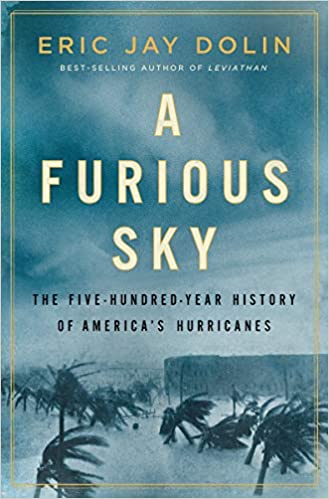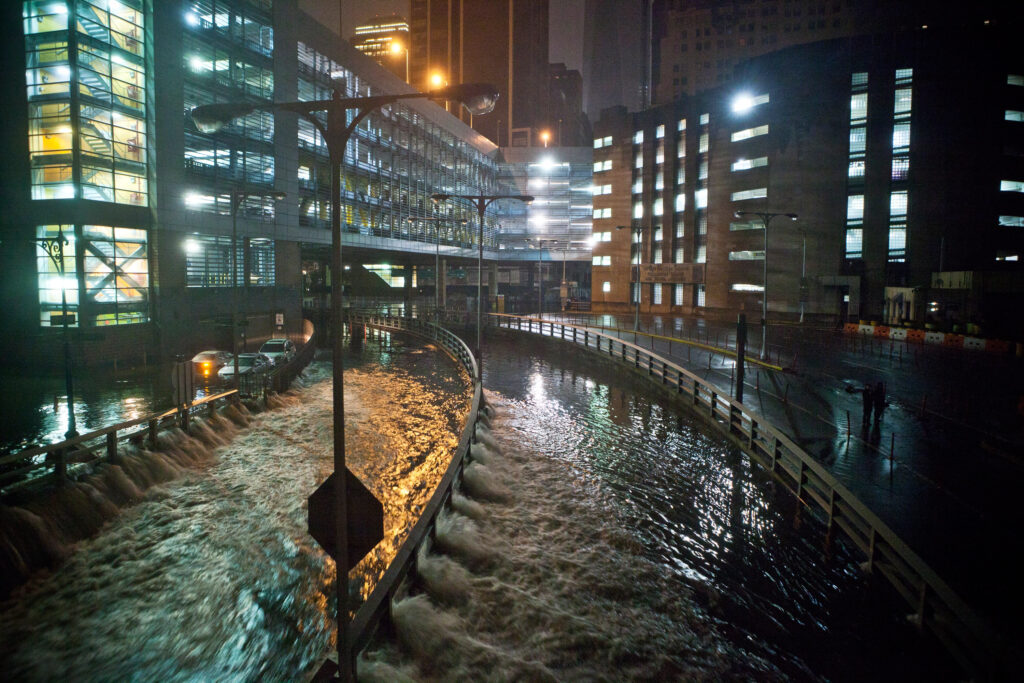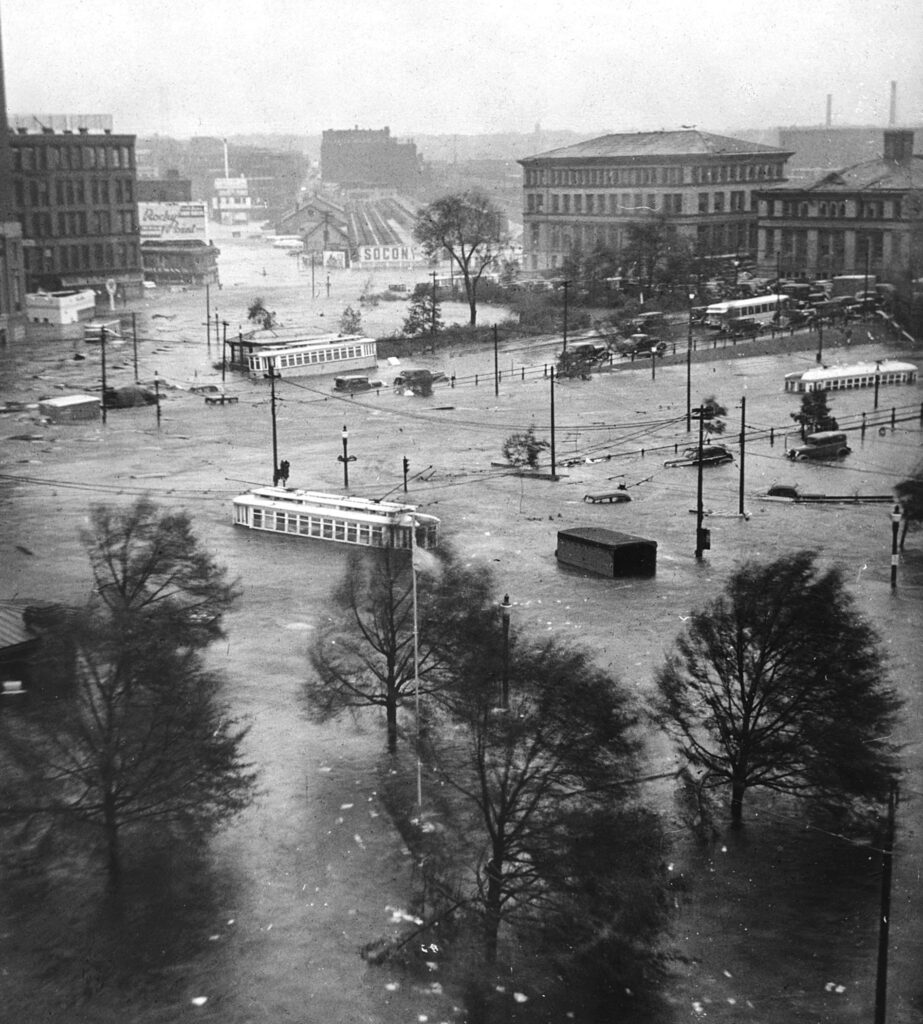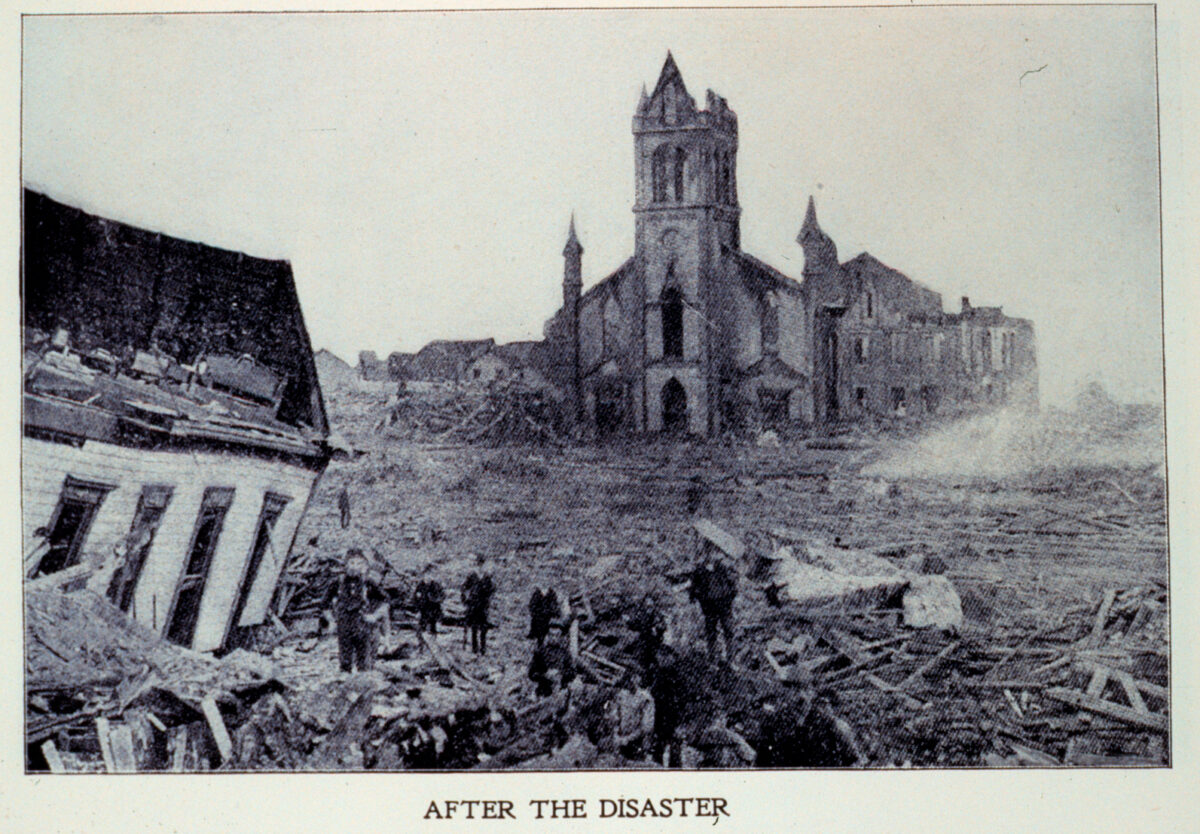This week marks the eighth anniversary of Hurricane Sandy, the largest Atlantic hurricane on record, which wreaked havoc upon the Northeast United States, causing billions of dollars in damage.
The storm hit just days before a presidential election and right before Halloween, plunging many areas of New York City into darkness and flooding the subway system.
But just a few months ago, Hurricane Isaias — downgraded to a tropical storm — left a smaller but still significant mark upon the New York City area. Tens of thousands were left without power and the streets were littered with trees and debris.

A FURIOUS SKY
The Five Hundred Year History of America’s Hurricanes
By Eric Jay Dolin
Liveright/WW Nolin
A gripping new history of American hurricane disasters by Eric Jay Dolin (Leviathan, Black Flags, Blue Waters), the reader is reintroduced to the unavoidable power of nature and its control over human affairs. Hurricanes have shaped American history in ways you might not expect — not just in their destruction but in man’s attempts to predict them.
The European powers which sought to control and profit from lands already occupied in the Americas and the Caribbean had the might to bring native populations to their knees. But they could do nothing in the face of weather’s most destructive forces. Hurricanes frequently conquered the conquerers.

The Great Colonial Hurricane of 1635 was taken by some early Puritans in New England as a sign from God.
In 1715, Spanish treasure fleets destroyed off the coast of Florida distributed gold, silver and jewels over hundreds of miles of ocean floor, feeding “thousands of fantasies and led to a rush of mariners sailing to the Florida coast to recover some of the booty.” Welcome to the age of piracy.
North American attempts to predict the paths of hurricanes were predictably stunted by the ability to get information to endangered areas quickly. In that regard, Dolin rightly notes Samuel Morse and the invention of the telegraph as instrumental in the struggle to predict weather
Before the late 19th century, hurricanes could almost never be foreseen or protected against. The dreams of rising communities along the Gulf Coast could be erased overnight.
Galveston remains the most tragic example in American history. The hurricane which hit this coastal Texan town in 1900 remains one of the worst natural disasters to ever strike the United States.
“Galveston did rise again,” writes Dolin, “but the prehurricane trajectory that had positioned it to become the undisputed economic and commercial center of Texas had been derailed.”

In theory a book detailing a series of hurricane disasters might appear to be an exercise in gloom. And while each hurricane Dolin details does seem to be worse than the last, his tales are distinctly and vividly drawn, pulling from dozens of eyewitness reports — from doctors and housewives and police offices and even a few from famous folk (Ernest Hemingway, Katharine Hepburn).
The book heads towards a hopeful outcome as hurricane prediction and documentation improves over time, allowing a fuller picture of these forces of destruction. This only disguises the fact that the hurricanes themselves are getting more dangerous — and no community facing into the Atlantic Ocean is safe.
At top: Image of the Galveston Hurricane aftermath in 1900. Courtesy NOAA


1 reply on “‘A Furious Sky’: A new book tracks the horrors of American hurricanes”
Will definitely be picking up this book! Thanks for sharing!